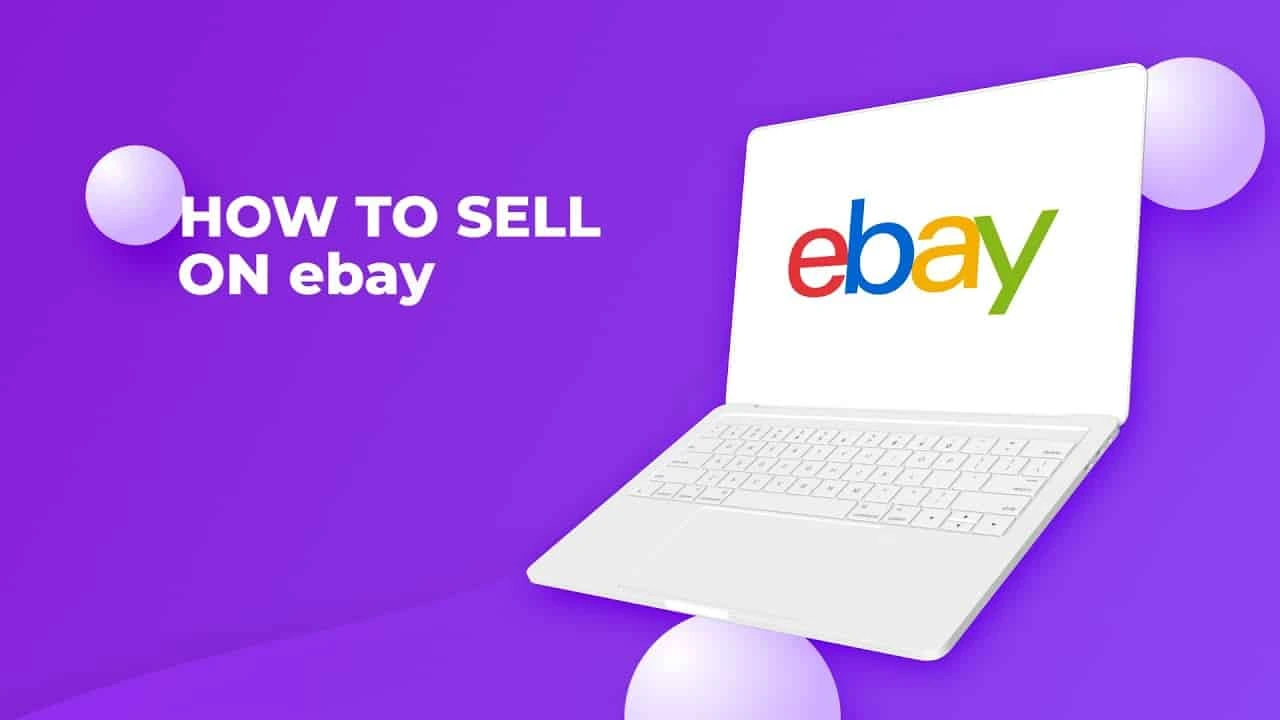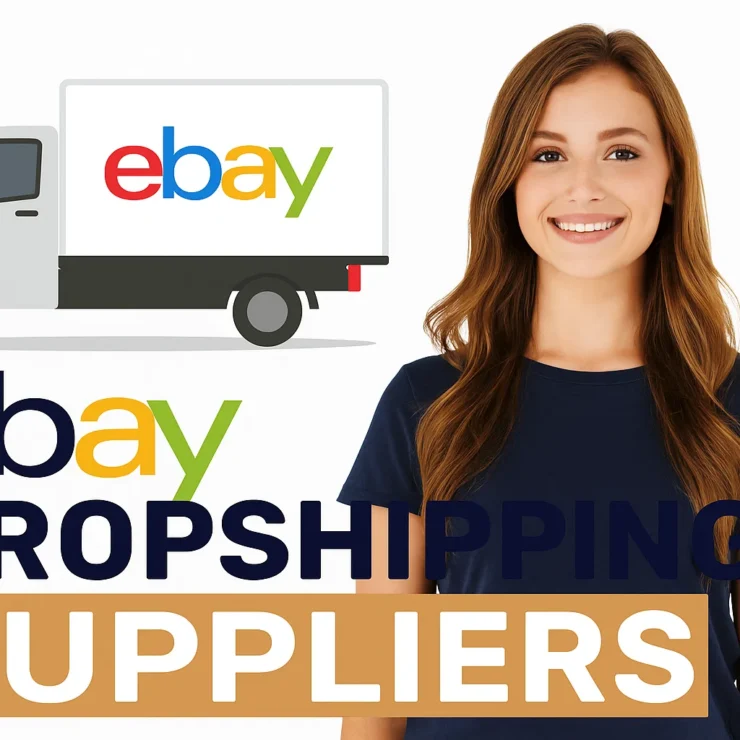Selling on eBay is one of the easiest and most flexible ways to make money online. Whether you’re decluttering your home, starting a side hustle, or building a full-time eCommerce business, eBay offers a massive marketplace with over 135 million active users worldwide. But how do you get started, and what does it take to succeed? In this guide, we’ll walk you through everything you need to know about how to sell on eBay, from setting up your account to optimizing your listings and maximizing profits. Let’s dive in!
1. How Much Money Does It Cost to Sell Something on eBay?
Before you start selling, it’s important to understand the costs involved. eBay charges a few fees, but they’re relatively low compared to other platforms. Here’s a detailed breakdown:
Insertion Fees: eBay allows you to list up to 250 items per month for free. After that, you’ll pay $0.35 per listing. This fee applies whether or not your item sells, so it’s important to price your items competitively to avoid wasting money on unsold listings.
Final Value Fees: When your item sells, eBay charges a Final Value Fee (FVF), which is a percentage of the total sale price, including shipping. This fee usually ranges between 10% and 15%, depending on the item category. Most categories have a 12.9% fee plus a $0.30 transaction fee. For example, if you sell a pair of shoes for $50 with $10 shipping, your total sale amount would be $60. eBay’s 12.9% fee on $60 would amount to $7.74, and after adding the $0.30 transaction fee, the total fee deducted from your earnings would be $8.04. Understanding these fees is crucial to pricing your items effectively and ensuring a good profit margin.
Payment Processing Fees: If you use eBay’s managed payments system, you’ll pay a small fee (around 2.9% + $0.30 per transaction). This fee covers the cost of processing payments from buyers.
Optional Fees: You can pay extra for features like promoted listings, bold titles, or subtitles to make your listings stand out. These fees are optional but can help increase visibility for high-demand items.
Pro Tip: Use eBay’s fee calculator to estimate your costs before listing an item. This will help you price your items competitively while ensuring a profit. Additionally, consider offering free shipping to attract more buyers, but make sure to factor the shipping costs into your item price.
2. How Much Can a Beginner Sell on eBay?
If you’re new to eBay, you might be wondering how much you can realistically earn. The good news is that even beginners can make money on eBay, but it’s important to set realistic expectations.
Starting Small: Many beginners start by selling items they already own, such as clothes, electronics, or collectibles. This is a great way to get familiar with eBay’s platform without making any upfront investments. For example, you might sell an old smartphone for $100 or a pair of designer jeans for $50. These small sales can add up quickly, helping you gain experience with listing, pricing, and shipping while also making some extra cash. Over time, as you become more comfortable with the process, you can explore sourcing inventory to scale your eBay business.
Average Earnings: According to eBay, the average seller makes $500–$1,000 per month, but this varies widely depending on what you sell and how much effort you put in. Some sellers earn just a few hundred dollars a month, while others make thousands.
Scaling Up: Once you get the hang of it, you can start sourcing products to sell for a profit. Many sellers eventually turn their eBay side hustle into a full-time business. For example, you might buy items in bulk from wholesalers or thrift stores and resell them on eBay for a profit.
Pro Tip: Focus on selling high-demand items with low competition. Research trending products using tools like eBay’s Terapeak or Google Trends. Look for items that sell quickly and have a high profit margin.
3. Is It Worth It to Sell on eBay?
Selling on eBay can be a great way to make money, but is it worth your time? Let’s break it down:
Pros:
Low Startup Costs: You can start selling with just a few items and minimal upfront investment. Unlike a traditional brick-and-mortar store, you don’t need to rent a space or hire employees.
Global Reach: eBay’s massive user base gives you access to buyers worldwide. This means you can sell to customers in other countries, increasing your potential sales.
Flexibility: You can sell part-time or full-time, depending on your goals. Many sellers start by listing a few items a week and gradually increase their activity as they gain experience.
Cons:
Fees: eBay’s fees can eat into your profits if you’re not careful. It’s important to factor in insertion fees, final value fees, and payment processing fees when pricing your items.
Competition: Popular categories like electronics and clothing can be highly competitive. You’ll need to find ways to stand out, such as offering competitive prices or excellent customer service.
Time-Consuming: Managing listings, shipping, and customer service can take time. If you’re selling a large volume of items, you may need to dedicate several hours a week to your eBay business.
Bottom Line: If you’re willing to put in the effort, selling on eBay can be a profitable and rewarding venture. It’s especially worth it if you enjoy selling unique or in-demand items.
4. Is It Easy to Sell Things on eBay?
Selling on eBay is relatively easy, but there’s a learning curve. Here’s what you need to know:
Setting Up Your Account: Creating an eBay seller account is quick and straightforward. You’ll need to verify your identity and link a payment method. The entire process can be completed in less than 30 minutes.
Listing Items: Listing an item takes just a few minutes. You’ll need to upload photos, write a description, and set a price. eBay provides templates and tools to make this process easier, even for beginners.
Managing Sales: Once your item sells, you’ll need to ship it and communicate with the buyer. eBay provides tools to make this process easier, such as printable shipping labels and tracking notifications.
Pro Tip: Use eBay’s mobile app to manage your listings and sales on the go. It’s a great way to stay on top of your eBay business, whether you’re at home or on the move.
5. Who Pays for Shipping on eBay?
Shipping costs can be a point of confusion for new sellers. Here’s how it works:
Seller-Paid Shipping: You can choose to cover the shipping costs yourself. This can make your listing more attractive to buyers, but it will reduce your profit margin. For example, if you sell an item for $20and pay $5 for shipping, your profit will be $15.
Buyer-Paid Shipping: You can pass the shipping costs on to the buyer. Just make sure to calculate the shipping costs accurately to avoid surprises. For example, if you list an item for $20 with $5 shipping, the buyer will pay $25 total.
Free Shipping: Offering free shipping can make your listing more attractive to buyers, as many shoppers prefer items without additional shipping costs. However, it’s important to factor the shipping expense into your pricing strategy. For example, if you sell an item for $25 with free shipping, and the shipping cost is $5, your actual earnings would be $20 after covering the shipping expense. While free shipping can boost sales, always ensure that your pricing still allows you to make a profit.
Pro Tip: Use eBay’s shipping calculator to estimate shipping costs and choose the best option for your business. You can also take advantage of eBay’s discounted shipping rates to save money.
6. How Do You Receive Payment on eBay?
eBay’s managed payments system makes it easy to get paid. Here’s a detailed look at how it works:
Payment Methods: Buyers can pay using credit cards, debit cards, or PayPal. eBay’s managed payments system consolidates all payments into one place, making it easier to track your earnings.
Payouts: Once the buyer pays, eBay deposits the funds directly into your bank account. Payouts typically take 1–2 business days, but the exact timing depends on your bank’s processing times. You can track your payouts in the “Payments” section of your eBay account.
Fees: eBay charges a small processing fee (around 2.9% + $0.30 per transaction). This fee covers the cost of processing payments and is deducted automatically before you receive your payout.
Payment Holds: If you’re a new seller, eBay may hold your payments for up to 21 days to ensure the buyer receives their item and is satisfied. Once you establish a track record of successful sales, these holds will be lifted.
Pro Tip: Make sure your bank account information is up to date to avoid delays in receiving your payments. You can also set up notifications to alert you when a payment is processed or a payout is initiated.
7. Explore eBay + Do Your Research
Success on eBay starts with research. Here’s how to find the best products to sell:
Trending Products: Use tools like eBay’s Terapeak or Google Trends to identify popular items. For example, during the holiday season, items like toys, electronics, and home decor tend to sell well.
Competitor Analysis: Look at what other sellers in your niche are doing. Pay attention to their pricing, photos, and descriptions. This will give you an idea of what works and what doesn’t.
Seasonal Trends: Some products sell better during certain times of the year. For example, holiday decorations sell well in December, while outdoor gear sells well in the summer. Plan your listings around these trends to maximize your sales.
Niche Markets: Consider selling in niche markets with less competition. For example, vintage items, collectibles, or handmade goods can be lucrative if you find the right audience.
Pro Tip: Start with items you already own to get a feel for the platform. Once you’re comfortable, you can start sourcing products to sell for a profit. Look for items at thrift stores, garage sales, or wholesale suppliers.
8. How Can I Increase My Chances of Selling on eBay?
Want to boost your sales? Here are some proven tips:
Optimize Your Listings: Use high-quality photos, detailed descriptions, and relevant keywords to make your listings stand out. For example, if you’re selling a pair of sneakers, include details like the brand, size, condition, and any unique features.
Competitive Pricing: Research similar listings and price your items competitively. Buyers are more likely to purchase from sellers who offer fair prices.
Promoted Listings: Pay a small fee to have your listings appear at the top of search results. This can increase visibility and help you sell faster.
Excellent Customer Service: Respond to buyer questions quickly and ship items on time. Positive feedback can help you build a strong reputation and attract more buyers.
Bundle Items: Consider selling items as a bundle to increase their value. For example, instead of selling a single video game, bundle it with a console and accessories.
Pro Tip: Offer a clear return policy to build trust with buyers. Many shoppers are more likely to buy from sellers who offer hassle-free returns.
9. Getting Started: Setting Up Your eBay Account
Ready to start selling? Here’s how to set up your eBay seller account:
Sign Up: Go to eBay’s website and click “Register” to create an account. You’ll need to provide basic information like your name, email address, and phone number.
Verify Your Identity: eBay will ask for some personal information to verify your identity. This may include your Social Security number or a copy of your ID.
Link a Payment Method: Connect your bank account to receive payments. You can also link a PayPal account if you prefer.
Create Your First Listing: Click “Sell” and follow the prompts to list your item. You’ll need to upload photos, write a description, and set a price.
Choose a Selling Plan: eBay offers two selling plans: Starter and Advanced. The Starter plan is free and allows you to list up to 250 items per month. The Advanced plan costs $27.95 per month and includes additional features like a custom storefront.
Pro Tip: Take advantage of eBay’s seller resources, including tutorials and webinars, to learn the ropes. You can also join eBay’s seller community to connect with other sellers and share tips.
10. How To Sell Stuff On eBay Bottom Line
Selling on eBay can be a fun and profitable way to make money, whether you’re decluttering your home or building a business. By understanding the costs, optimizing your listings, and providing excellent customer service, you can increase your chances of success. Here’s a quick recap of the key points:
Start Small: Begin by selling items you already own to learn the platform.
Research Trends: Use tools like Terapeak and Google Trends to find high-demand products.
Optimize Listings: Use high-quality photos, detailed descriptions, and competitive pricing.
Provide Great Service: Respond to buyers quickly and ship items on time.
Scale Up: Once you’re comfortable, start sourcing products to sell for a profit.
Remember, it’s all about starting small, learning as you go, and scaling up over time. With the right strategies and a bit of effort, you can turn your eBay side hustle into a thriving business.
FAQs
How do I create an eBay seller account?
Go to eBay’s website, click “Register,” and follow the prompts to set up your account.
What are the best items to sell on eBay for beginners?
Start with items you already own, like clothes, electronics, or collectibles.
How do I handle returns and refunds on eBay?
Set a clear return policy in your listings and process refunds promptly if needed.
Can I sell internationally on eBay?
Yes, eBay allows you to sell to buyers worldwide. Just make sure to account for international shipping costs.
How do I optimize my eBay listings for better visibility?
Use high-quality photos, detailed descriptions, and relevant keywords.
What are eBay’s policies for prohibited items?
eBay prohibits items like weapons, counterfeit goods, and certain electronics. Check eBay’s guidelines for a full list.
How do I handle negative feedback on eBay?
Respond professionally and try to resolve the issue. You can also request feedback removal if it violates eBay’s policies.
What are the best times to list items on eBay?
List items in the evening or on weekends when more buyers are active.
How do I calculate shipping costs accurately?
Use eBay’s shipping calculator or weigh your items before listing.
Can I sell handmade or custom items on eBay?
Yes, eBay has a dedicated category for handmade and custom items.
Conclusion
Selling on eBay is a fantastic way to turn your unused items into cash or build a thriving online business. With the right strategies and a bit of effort, you can maximize your profits and enjoy the flexibility of being your own boss. So why wait? Start your eBay selling journey today!
Contact Us for Tailored Solutions – Stores Automation:
Ready to transform your Ebay store and achieve big wins? Contact us at Stores Automation for personalized solutions that leverage the power of automation for your business. Reach out to us at 302-204-8244 or via email at info@storesautomation.com. For more information, Sign up for Ebay Store Automation. Embark on the path to e-commerce success with Stores Automation – where small changes lead to big wins!





